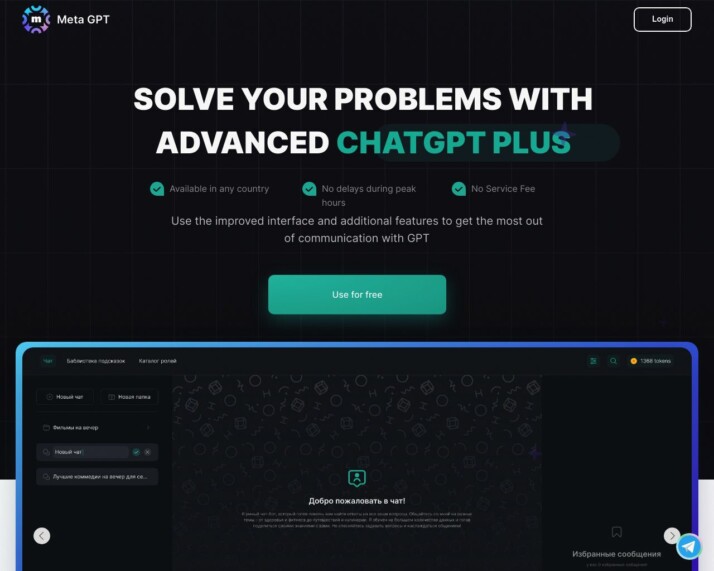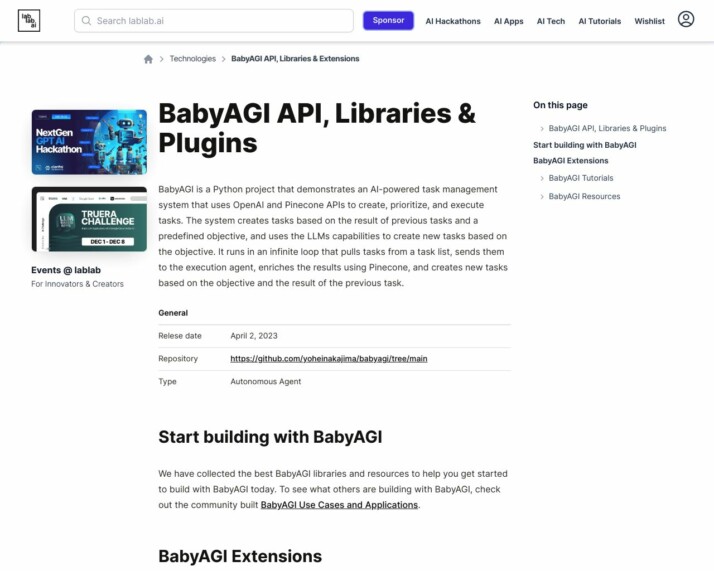Introduction
Most people are familiar with AI technologies like MetaGPT Vs BabyAGI, but understanding their capabilities and applications can be challenging. In this article, we will delve into the world of these large language models and explore how they are revolutionizing the field of artificial intelligence. If you’ve ever wondered how AI can help automate tasks and solve complex problems, then this article is for you.
MetaGPT and BabyAGI are the next generation of AI assistants that offer autonomous task generation and execution. They utilize advanced AI technologies like GPT-4 and Pinecone’s vector search engine to comprehend complex tasks and find relevant information to complete them efficiently. Whether you’re a software developer, entrepreneur, or individual seeking a personal assistant, these tools have something to offer.
In this article, we will break down the features and intended audiences for both MetaGPT and BabyAGI. We’ll explore how software developers, project managers, and entrepreneurs can benefit from MetaGPT’s automated code generation and project management capabilities. On the other hand, we’ll discuss how BabyAGI caters to business professionals, individuals, and industries with complex information needs, providing efficient task management and problem-solving.
So if you’re ready to dive into the exciting world of AI and discover how MetaGPT and BabyAGI are transforming industries, stay tuned. This article will equip you with the knowledge you need to harness the power of these AI technologies and unlock new possibilities.
An Overview of MetaGPT and Its Offering
A brief MetaGPT overview reveals that this sophisticated framework is principally designed for professionals and organizations in the technology and software development sectors. The MetaGPT offering appeals to a wide range of users that include software developers and engineers, project and product managers, startups, technology companies, and AI enthusiasts.


Let’s quickly check who the MetaGPT target audience is. Software developers and engineers find value in its automated code generation and quality compliance features. Project and product managers can utilize MetaGPT’s unique project management capabilities.
Startups and entrepreneurs are drawn to the framework’s ability to set up an entire software company with a single prompt, while companies in search of automation solutions find its comprehensive automation approach beneficial. Tech innovators and experimenters find the multi-agent collaboration and global memory pool feature appealing.
So, what makes MetaGPT special? The MetaGPT uniqueness lies in its comprehensive automation, multi-agent collaboration, and innovative approach to complex software development. It’s like a team of specialized AI agents dedicated to revolutionizing software development through AI.
Now, let’s talk about what they’ve shipped. The MetaGPT shipped products include a framework that tackles complex software development tasks. These range from basic code generation to the development of intricate systems.
The MetaGPT vision focuses on revolutionizing software development via AI, aiming to streamline the process and make it more efficient and scalable. This summarizes the MetaGPT offering, highlighting its unique features and potential benefits for a tech-savvy audience.
An Overview of BabyAGI: Advanced AI for Complex Task Management
BabyAGI is a breakthrough in AI-driven automation, offering users the ability to automate numerous tasks using its advanced technologies. It uses a combination of GPT-4, a Large Language Model (LLM), and Pinecone, a vector database server, to handle complex problem-solving and information retrieval tasks.


This unique combination of technologies gives BabyAGI broad applicability in a variety of contexts that require advanced problem-solving skills. The specific industries it serves are not specified, but its features suggest it can be a powerful tool in areas including research, legal, finance, and healthcare, amongst others.
Its autonomous agents are designed to generate and execute tasks based on set objectives, though it lacks distinct development and production environments. Despite being primarily text-based and requiring coding knowledge for setup, BabyAGI allows user interactions through the task setup. However, there’s no mention of cloud-based hosting or any clear information on data encryption or third-party authentication protocols.
A key feature of BabyAGI is its ability to remember past interactions thanks to Pinecone, which stores AI output and uses this context for ongoing processes. Unfortunately, it doesn’t provide any tools for explaining the logic behind AI decisions or debugging.
The target audience of BabyAGI ranges from business professionals and organizations that require efficient task management to tech enthusiasts interested in cutting-edge AI technologies. Even individuals looking for an AI-driven personal assistant could find it useful. It shows significant promise despite not supporting integration with Huggingface’s library of models or Zapier’s workflow automation services.
In conclusion, BabyAGI represents a significant step in AI automation. Its vision is to ease the burden of task management, offering a high level of autonomy in managing both routine and complex tasks efficiently. Its ease of use and broad applicability make it a unique and versatile tool in various applications, both in a professional and personal context.
Comparing Features: MetaGPT vs BabyAGI vs SmythOS
Our in-depth comparison brings to light the functionalities of MetaGPT, BabyAGI, and SmythOS. Evaluating their usability, performance, and capabilities helps to understand which Large Language Model (LLM) is the right fit.
These tools differ significantly in features they offer. This affects how well they serve different needs in various contexts. Recognizing the differences and similarities will aid in identifying the most suitable tool for your requirements.
| Features | MetaGPT | BabyAGI | SmythOS |
|---|---|---|---|
| Hosted Agents | ❌ | ❌ | ✅ |
| Environments | ✅ | ❌ | ✅ |
| Visual Builder | ❌ | ❌ | ✅ |
| No-Code Editor | ❌ | ❌ | ✅ |
| Memory & Context | ✅ | ✅ | ✅ |
| Explainability and Transparency | ✅ | ❌ | ✅ |
| Autonomous Agents | ✅ | ✅ | ✅ |
| Debug Tools | ❌ | ❌ | ✅ |
| Multimodal | ❌ | ❌ | ✅ |
| Problem-Solving Capabilities | ✅ | ❌ | ✅ |
Users might prefer MetaGPT for its robust problem-solving capabilities, making it a suitable choice for applications needing autonomous problem-solving. However, it lacks hosted agents and visual builder, restricting its ease of use compared to SmythOS.
On the other hand, BabyAGI shares some functionalities with MetaGPT. It misses out on crucial features like environments, explainability, transparency, and problem-solving capabilities. This can limit BabyAGI’s capacity to cater to diverse user needs.
Overall, being aware of the features, capabilities, and differences of these LLMs aids in picking the most optimal tool for your specific needs.
MetaGPT Vs BabyAGI: Audience Analysis
The audience analysis of MetaGPT and BabyAGI provides valuable insights into the demographics and customer base of these LLM-powered tools. By understanding who uses these AI-driven solutions and why, we can better comprehend their wide range of use cases and applications.
- Audience: MetaGPT and BabyAGI cater to a diverse audience with varying needs and interests.
- Business Professionals and Organizations: BabyAGI offers efficient task management and automation capabilities, making it ideal for business environments. It aids in handling routine tasks, data analysis, and complex problem-solving, potentially increasing productivity in various operations.
- Developers and Tech Enthusiasts: With the integration of advanced technologies like GPT-4 and Pinecone’s vector search engine, BabyAGI appeals to developers and tech enthusiasts seeking practical applications of cutting-edge AI technology.
- Individuals Seeking Personal Assistants: BabyAGI can serve as an AI-driven personal assistant, managing and automating daily tasks. Its ability to understand complex tasks and autonomously execute them can be beneficial for personal time and task management.
- Industries with Complex Information Needs: BabyAGI is particularly useful in industries like research, legal, finance, or healthcare that require complex information retrieval and analysis. Its AI capabilities assist in sifting through large volumes of data to find relevant information.
MetaGPT, on the other hand, targets professionals and organizations primarily in the software development and technology sectors:
- Software Developers and Engineers: MetaGPT’s ability to develop complex software and streamline workflows appeals to software developers and engineers.
- Project Managers and Product Managers: The framework’s comprehensive project management features benefit project and product managers.
- Startups and Entrepreneurs: MetaGPT’s simplified software company setup feature is attractive to startups and entrepreneurs looking to minimize operational complexities.
- Companies Looking for Automation Solutions: MetaGPT’s scalability and ability to handle complex tasks make it suitable for organizations seeking to automate their software development processes.
- Technology Innovators and Experimenters: MetaGPT’s innovative features, such as multi-agent collaboration and global memory pool, appeal to tech innovators constantly seeking cutting-edge solutions.
- AI and Machine Learning Enthusiasts: MetaGPT’s foundation in large language models and advanced AI capabilities caters to AI and machine learning enthusiasts keen on exploring new applications in software development.
In conclusion, MetaGPT and BabyAGI have unique features that make them valuable tools for their respective audiences. However, when compared to SmythOS, the advantages of SmythOS, such as [specific advantages], make it the preferred choice.
Conclusion
In summary, the comparison between MetaGPT and BabyAGI reveals important insights into their respective capabilities and target audiences.
MetaGPT, as an LLM-based language model, caters primarily to professionals and organizations in the software development and technology sectors. It offers a wide range of features and applications that appeal to software developers, engineers, project managers, startups, and AI enthusiasts. However, it’s pertinent to mention that MetaGPT has areas where it can further enhance its offering, such as TXT file support, PDF parsing, and Word document interaction.
On the other hand, BabyAGI stands out for its autonomous task generation and execution capabilities. It utilizes advanced AI technologies like GPT-4 and Pinecone’s vector search engine to understand complex tasks and find relevant information for task resolution. BabyAGI is suitable for business professionals, developers, individuals seeking personal assistants, and industries with complex information needs. It offers a unique combination of AI technologies for various applications.
When we also consider SmythOS in this comparison, it emerges as a strong contender. SmythOS provides a scalable framework for complex software development projects and utilizes a hosted vector database for efficient data storage. A standout feature of SmythOS is its diverse functionality – it doesn’t restrict its capabilities to language processing but also offers features like sitemap crawling and YouTube transcript extraction. These features set SmythOS apart as a comprehensive solution for task automation and problem-solving.
In conclusion, while MetaGPT and BabyAGI have their strengths, SmythOS offers a more robust and versatile option. Its capabilities, including scalability, hosted vector database, and additional functionality, make it the preferred choice for organizations and individuals seeking efficient and comprehensive AI-driven automation solutions.
Last updated:
Disclaimer: The information presented in this article is for general informational purposes only and is provided as is. While we strive to keep the content up-to-date and accurate, we make no representations or warranties of any kind, express or implied, about the completeness, accuracy, reliability, suitability, or availability of the information contained in this article.
Any reliance you place on such information is strictly at your own risk. We reserve the right to make additions, deletions, or modifications to the contents of this article at any time without prior notice.
In no event will we be liable for any loss or damage including without limitation, indirect or consequential loss or damage, or any loss or damage whatsoever arising from loss of data, profits, or any other loss not specified herein arising out of, or in connection with, the use of this article.
Despite our best efforts, this article may contain oversights, errors, or omissions. If you notice any inaccuracies or have concerns about the content, please report them through our content feedback form. Your input helps us maintain the quality and reliability of our information.
Alexander De Ridder
Co-Founder, Visionary, and CTO at SmythOS. Alexander crafts AI tools and solutions for enterprises and the web. He is a smart creative, a builder of amazing things. He loves to study “how” and “why” humans and AI make decisions.
Explore All Comparison Articles
Decisions vs. Sola: AI Workflow Automation Showdown
AI-powered workflow automation platforms revolutionize how businesses streamline operations and boost productivity. This comparison explores Decisions vs. Sola, and SmythOS,…
DeepOpinion vs. Sola: Comparing AI Automation Platforms
AI-powered automation platforms revolutionize business operations, but choosing the right solution can be challenging. This comparison of DeepOpinion vs. Sola,…
DevGPT vs. Sola: AI-Powered Development Tools Compared
AI-powered development tools revolutionize software creation, offering unprecedented efficiency and capabilities. This comprehensive review compares DevGPT vs. Sola, and SmythOS,…
Fine AI vs. Sola: Comparing AI Automation Tools
AI-powered automation transforms software development and business workflows, offering unprecedented efficiency and innovation. Fine AI vs. Sola present distinct approaches…
FlowiseAI vs. Sola: Comparing AI Automation Platforms
AI-powered automation revolutionizes business operations, driving efficiency and innovation across industries. FlowiseAI vs. Sola offer distinct approaches to harness this…
Gooey AI vs. Sola: AI-Powered Automation Platforms Compared
AI-powered automation platforms revolutionize how businesses streamline operations and enhance productivity. This comparison delves into Gooey AI vs. Sola, two…

